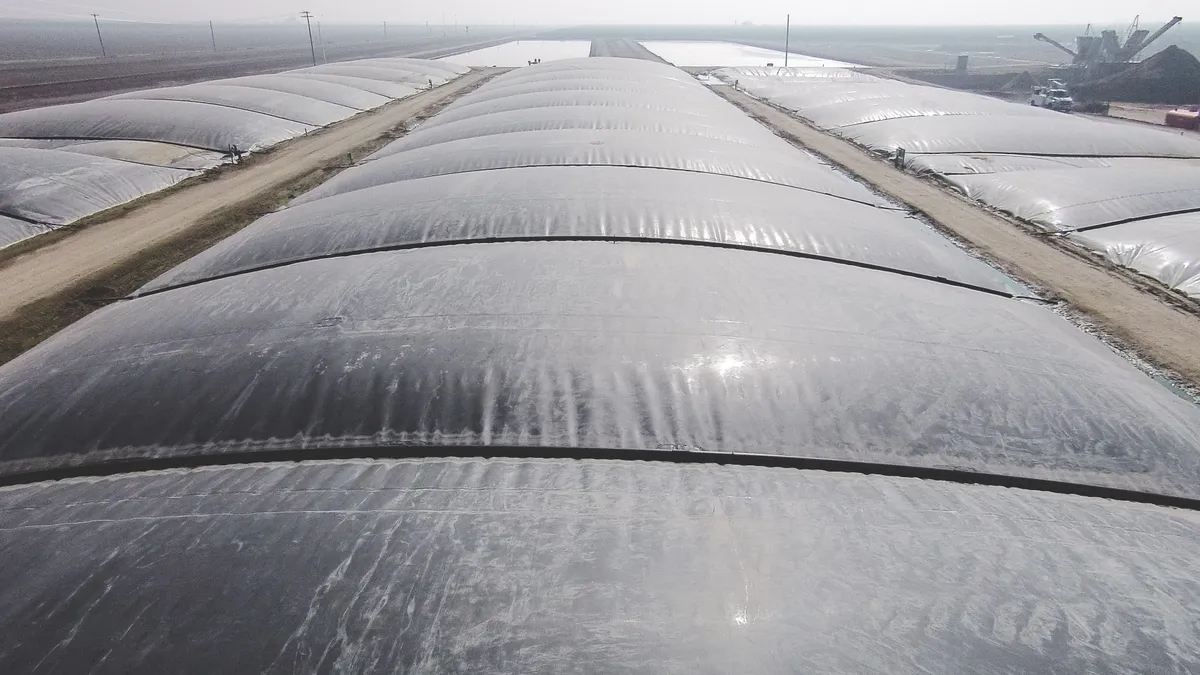Two groups have announced plans or launched new satellites in recent months that can map fugitive landfill gas. The technology is maturing at a critical time for emissions mitigation, as regulators consider tightening restrictions on landfills and deadlines loom for global methane reduction commitments.
Last month, GHGSat announced plans to launch nine satellites by the end of 2026, nearly doubling its existing fleet of 12. Carbon Mapper announced the launch of its Tanager-1 satellite in August, and it began reporting data from the satellite in November.
These satellites, which can home in on gases like carbon dioxide and methane, could play an important role in helping nations find and address greenhouse gas emissions, Jean-Francois Gauthier, senior vice president of strategy for GHGSat, said on a recent webinar.
“The bottom line is that in the past year we've detected more emissions than ever before, despite global pledges,” Gauthier said. “It's clear that both industry and governments need better data, as well as detection and monitoring capabilities.”
The expansion of monitoring technologies has earned increasing support from the public sector, as regulators and non-governmental organizations work to tackle plumes of escaped methane, a gas with more than 80 times the global warming potential of carbon dioxide over 20 years and a major component of landfill gas. The private sector, which includes large landfill owners, is also getting on board with the technology to tighten existing gas collection systems.
GHGSat, based in Quebec, is a private company that launched the first commercial satellite to measure greenhouse gas emissions from industrial sources in 2016. The company has worked with regulators like the U.S. EPA and Environment and Climate Change Canada to demonstrate its technology, and it has had its instruments validated by NASA and the European Space Agency.
Gauthier said satellites could play a role in making emissions data for landfills more accurate, something that has drawn the attention of environmentalists who say the industry and federal agencies are undercounting emissions with overly generous models.
He said that phenomenon played out as GHGSat monitored oil and gas wells over the last eight years. New data from satellites and other technologies has allowed scientists to find wells where models predicted emissions levels two or three times lower than real-world conditions, Gauthier said. After demonstrations of satellites’ success with oil and gas monitoring, the EPA has signaled its willingness to accept aerial imaging as a new monitoring technology in the sector.
Gauthier is hoping to repeat that process with landfills. Satellite companies are betting they can convince EPA to recognize satellite monitoring technology as part of a suite of modern technologies used to demonstrate compliance with landfill rules.
"It's a very different environment, because there's been so many advances in the last five, 10 years in all levels of measurements for methane," Gauthier said.
Last month, Carbon Mapper also began updating its publicly available data portal with scans from its Tanager satellite. Though the nonprofit cautions the information is preliminary, it has already begun to identify several methane plumes originating from landfills in the U.S.
The largest such plume appears to be at GFL Environmental's Sampson County Landfill in North Carolina, a facility that has been flagged for emissions issues for years. The facility recently commissioned a system to convert landfill gas to renewable natural gas with Opal Fuels; that came online in October.
Carbon Mapper said in a press release in October that its publicly available data portal can complement existing satellite monitoring efforts like NASA’s own EMIT system. Its scientists also hope the data can be used to inform local advocates near polluting landfills. The nonprofit, backed by major philanthropic donors and support from NASA’s Jet Propulsion Laboratory, plans to launch an additional Tanager satellite to complement the first.

Landfill engineers caution the satellites won’t be able to replace other methods of detecting landfill emissions. Different forms of advanced emissions monitoring are better for different scenarios, Dave Hostetter, a vice president at SCS Engineers said at Wastecon in October.
Generally speaking, "the further away you get from the methane, the more difficult it is to pinpoint where it's coming from,” Hostetter said. But satellites, in his view, have the benefit of being able to capture a snapshot of a landfill many times over the course of a relatively long equipment lifespan.
In one example of this, GHGSat has been able to capture emissions from a landfill in Israel roughly 80 times over the past year and a half, Gauthier said. But he also agrees that satellites are not a one-size-fits-all solution.
“This is not a silver bullet; this is one tool to bring to the table to use in conjunction with measurements on the ground,” Gauthier said.
He also sees GHGSat as coexisting alongside an ecosystem of satellite networks, including those run by Carbon Mapper or agencies like NASA. Gauthier said GHGSat has been following Carbon Mapper for some time and “welcomes” the launch of their satellite, saying there may be room for collaboration in the future.
“It would be a little bit petty to see this as competition, honestly, because there is a need for as many satellites as we can [get] right now,” Gauthier said. “There are way too many emissions to start picking and choosing which instrument is being used for this.”



















